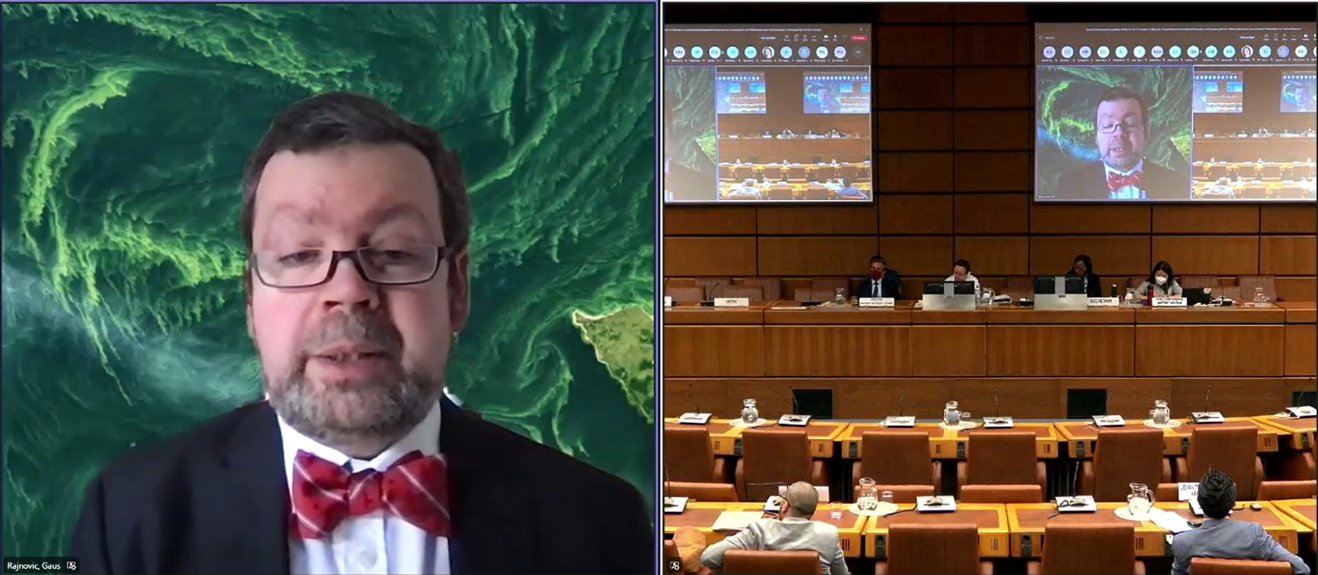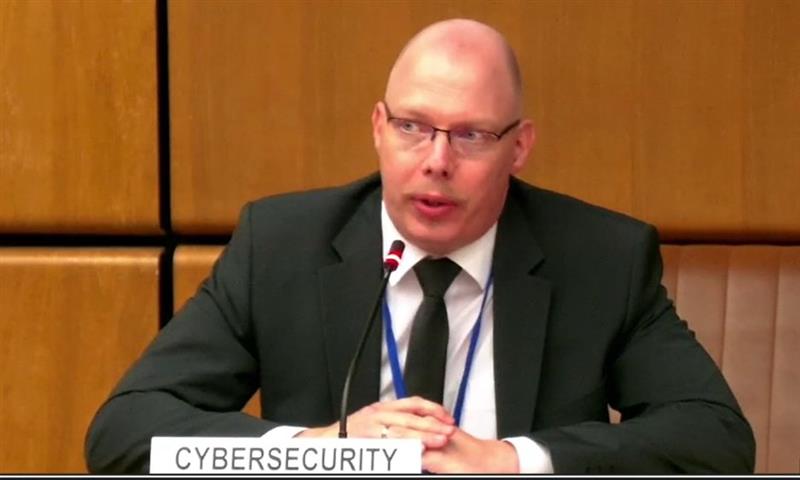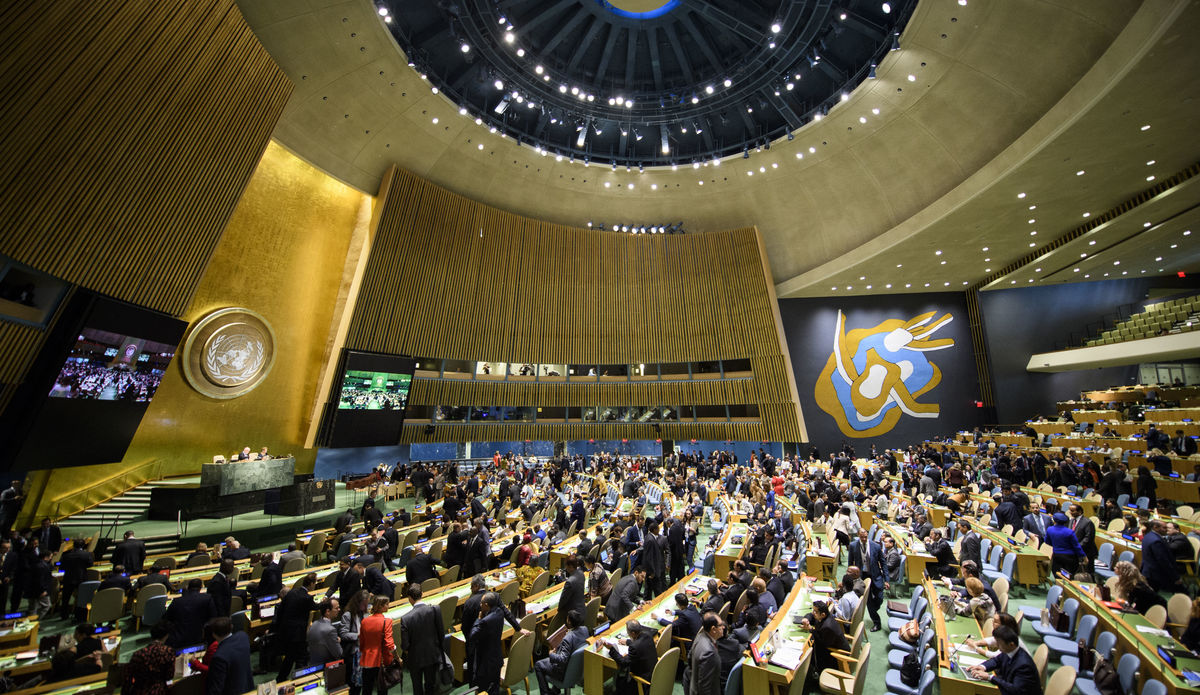On the 13th and 14th of June, Cybersecurity Tech Accord signatories were invited to deliver remarks to the United Nations’ committee negotiating a new cybercrime treaty during their Second Intersessional Consultation. As an accredited nongovernmental participant in the Ad Hoc Committee to Elaborate a Comprehensive International Convention on Countering the Use of Information and Communications Technologies for Criminal Purposes (AHC), the Cybersecurity Tech Accord has engaged with the work of the AHC since it began and continues to coordinate input from across the tech industry to support the development of an effective and rights-respecting new cybercrime treaty.
The multi-year AHC process, which began in January, will hopefully result in an international instrument that enhances capacities to combat rising cybercrime across borders. The effort has also raised concerns, however, that a poorly designed treaty might undermine human rights or existing systems for international cooperation. This is why last September the Cybersecurity Tech Accord joined with the CyberPeace Institute to launch the Multistakeholder Manifesto on Cybercrime, highlighting redlines and priorities for governments to keep in mind throughout the negotiations. It is also why we will continue to engage in this process moving forward.
During the most recent consultations in Vienna, signatory representatives from Balasys and Panasonic provided industry guidance around the kinds of technical assistance measures needed to combat international cybercrime. Their respective remarks are provided below, emphasizing the importance of protecting strong encryption across the online ecosystem and of cooperation with the private sector in addressing international cybercrime.
Gaus Rajnovic, Cyber Security Manager, Panasonic

The first international milestone in the fight against cybercrime was the Council of Europe‘s Budapest Convention. The Budapest Convention not only defined the concepts of cybercrime, but also contained procedural rules. To this day, the convention remains one of the starting points for international regulation of cybercrime. It may also serve as a good guideline for the regulation to be developed by the United Nations.
However, all regulations can contain points of debate. In the case of the Budapest Convention, the issue of privacy is one such point. It has been the subject of criticism over the two-decade history of the convention. The convention sets out obligations for collecting, recording, and intercepting content data in real-time, transmitted by computer systems. It is important to highlight that the vast majority of the content data that is transmitted through the internet is encrypted. This means that data can only be collected and recorded in encrypted form. To break the encryption, law enforcement agencies need a backdoor in the system or a deliberate weakening of the encryption. These are theoretically and technologically feasible, but they raise practical feasibility concerns, doubts concerning proportionality, and security risks.
Before continuing, I would like to emphasize that I do not intend to question the importance of fighting against cybercrime, but merely to find a way to minimize both security risks and privacy concerns.
In order to deliberately weaken any encryption algorithms, the active involvement of all the major players in the technology sector would be essential, as they would have to implement these weakened encryption algorithms in their commercial products. At the same time, we should not forget the free software movement alongside the big tech giants. In this community, efforts to weaken encryption may be resisted because of their strong commitment to both trusted technologies and privacy. It is important to emphasize that the encryption software products we currently use in most web, cloud, and mobile technologies on our smartphones and laptops have been developed by technology companies and members of the free software movement communities.
Even if methods to weaken encryption can be successfully enforced, the question is what the drawbacks are alongside the benefits they bring. For law-abiding citizens, the surveillance is likely to be 100% successful, but for criminals, this rate might not be significantly higher than it is now.
Free software, for instance, is never backed by a single organization, company, or state, but by decentralized communities that no one directly governs. The essence of free software is the right that users are free to modify the functionalities according to their needs. This means that cybercriminals can also evade the surveillance and weakened encryption that law enforcement agencies are able to break. In other words, our tools against the most dangerous cybercriminals and terrorists will be no more effective than they are today.
Whatever solution we choose, let us not forget that backdoors in our security systems can be exploited not only by us, but also by our enemies – against us. Cybercriminals today are still working hard to find specific software flaws that can be used to break into computer systems to acquire or corrupt as much data as possible. These criminals, knowing that there is a backdoor in every encrypted communication on the internet, would probably devote all their resources to finding and exploiting it. If even one of these criminal groups succeeds, the impact is currently unimaginable.
Szilard Pfeiffer, Security Engineer & Evangelist at Balasys

The importance of technical assistance has been highlighted multiple times and it is not possible to overestimate its importance. Organizations handling cybersecurity incidents, irrespective of the sector they belong to, must have required knowledge and expertise to perform the task correctly and efficiently. However, the current discussion does not mention the role of the private sector explicitly, which leaves things open to interpretations and assumptions. It is quite easy to assume that only public and/or state entities are the ones who can provide and receive technical assistance. The same holds for capacity building, by not being explicit it can be wrongly assumed that only the public sector is the intended audience.
This omission must be addressed, and the Convention must be explicit in its intentions, because the situation in the private sector is far from uniform. Some organizations from the private sectors have capabilities and expertise that only a few states can match and which even fewer can surpass. This is offset by a vast number of organizations which have only rudimentary expertise in handling incidents. And many others do not have any capabilities or expertise at all. This is very dangerous situation as the majority of victims of cybercrime are from outside the public sector. If non-public sectors cannot identify an incident, let alone do something about it, it would not be possible to reduce the level of crime.
As said, some private organizations possess expertise to handle incidents and most multinational organizations fall into this category. By their nature, multinationals handle trans-border incidents. Not only incidents affecting the organization itself but also incidents involving multiple other organizations. In essence, we are coordinating (in a loose sense of the word) incident handling between multiple organizations when needed. This is done seamlessly, and we have been doing this for decades.
This state of affairs, and the role the private sector is playing in combating incidents, is acknowledged in a cursory way in various forums and documents but never really moves forward. In practice, public and/or state entities do not acknowledge, let alone utilize, these capabilities. Instead, the Private sector is mostly held at arm’s length and, with very few exceptions, expected only to provide information to, and follow advice from, state entities.
The Convention should call on its signatories to explore how public and private sectors can deepen their cooperation. This cooperation should, where possible and appropriate, treat private organizations as necessary partners with state institutions. It is even possible to envisage a scenario where a private organization would undergo some kind of vetting and certification process which would then enable them to act as an associated part of a public institution.
In conclusion, the Convention should embrace the role of private sector in technical assistance and capacity building. The Convention must state that the private sector is also entitled to technical assistance and that it is also encouraged to develop its capabilities. Additionally, signatories of the Convention should be strongly encouraged to explore new and novel ways that the private sector can work together with, and be considered a peer of, the public sector in these matters.
The contributions of these two signatories underscores the values and mission of the Cybersecurity Tech Accord – to give a voice to the technology industry on matters of peace and security online. The Cybersecurity Tech Accord was honored to be asked to participate in the Second Intersessional Consultation and looks forward to continuing to facilitate industry engagement with the AHC process moving forward.

